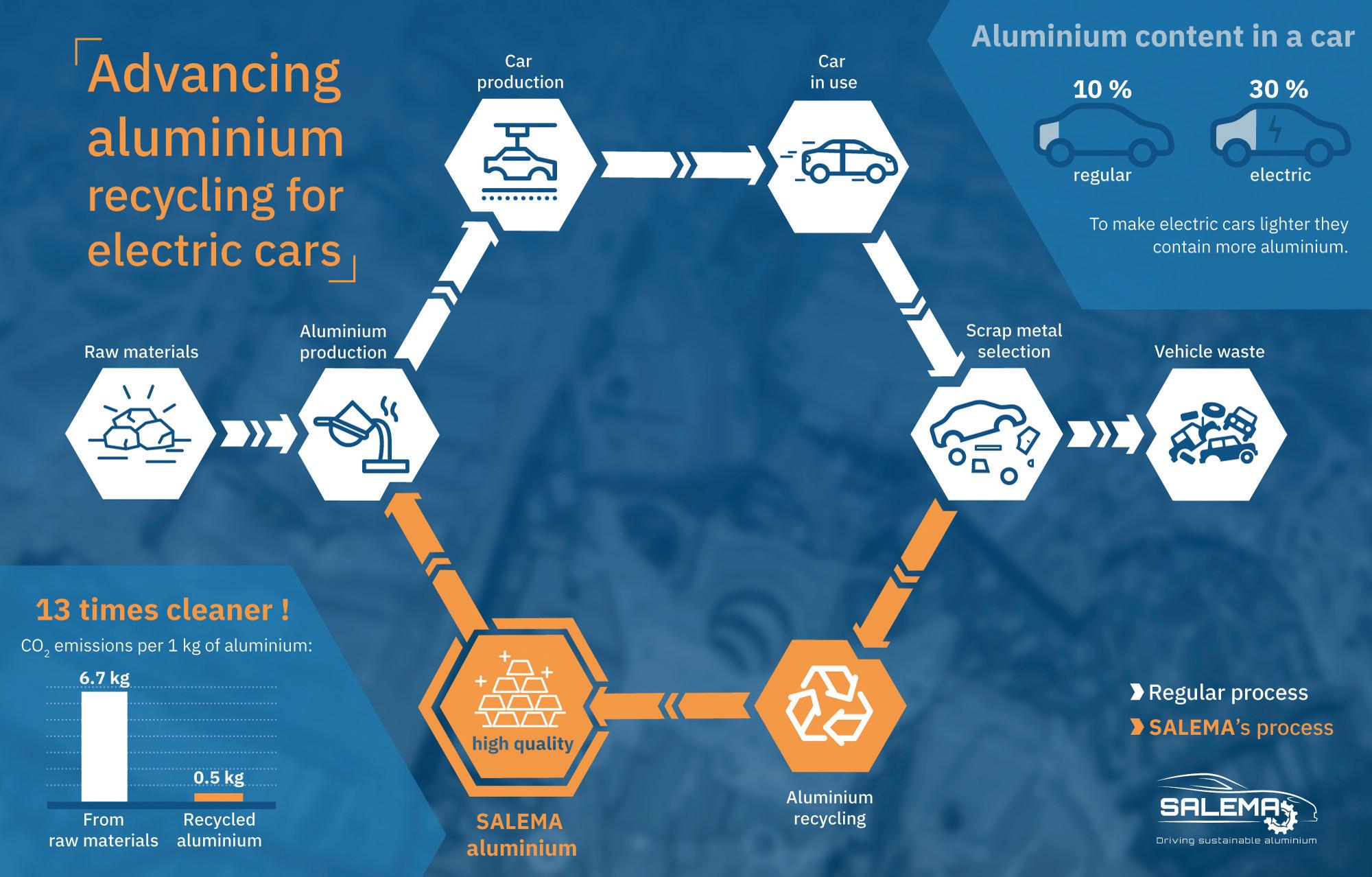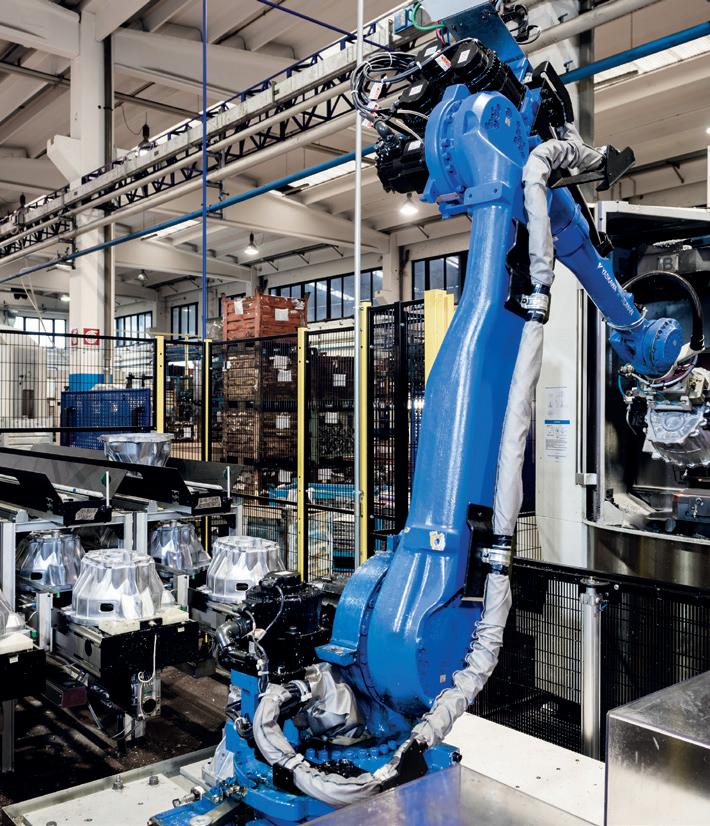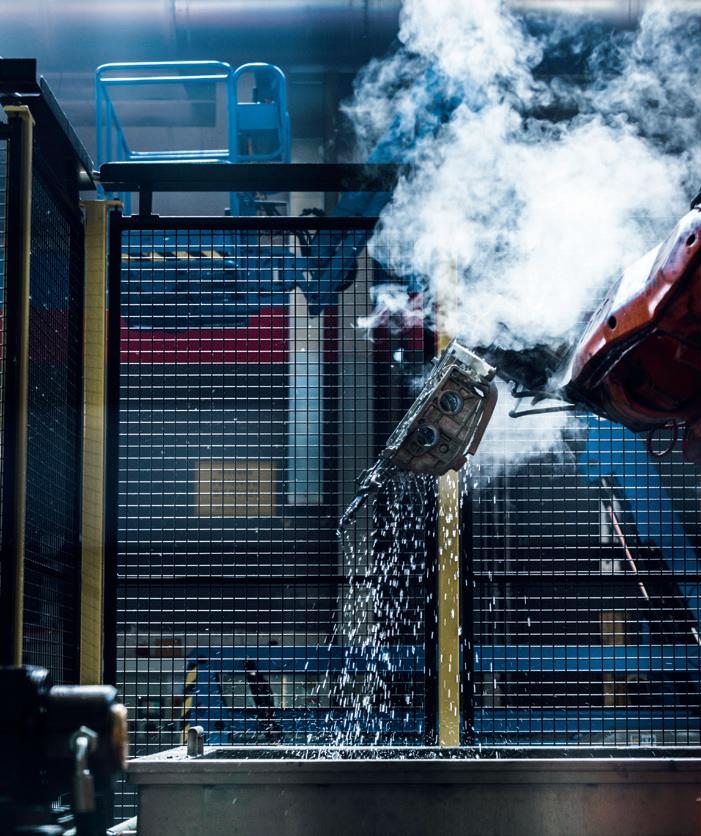
5 minute read
Project to make the European EV industry less reliant on Alu imports
By Massimiliano Saltori*
Aluminium is an essential metal for European electric automotive production. A new EU-funded project is now betting on a circular economy approach to keep the industry clean and low cost.
Over the past year, the electric vehicle market has experienced remarkable growth, showing no signs of slowing down soon. Globally, two million electric cars were sold just in the first quarter of 2022, an increase of 35% from the prior year, despite strains on supply chains worldwide.
The transition from internal combustion engines to electric vehicles (EVs) is perhaps one of the most fundamental innovations in our ongoing fight against climate change. Yet, electric cars require several critical raw materials (CRMs) and specific alloys that were not as essential in previous generations of automobiles.
One of the main metal components used in EV production, aluminium, is particularly susceptible to CRM shortages. Bauxite ore, its most important element, is imported into the EU by 84% via African countries, while magnesium and silicon, other key ingredients, are overwhelmingly sourced from China.
As a result of the current geopolitical climate, European policymakers are planning to resume CRMs extractions domestically within a few years – in the case of magnesium, as early as 2025. However, primary production and mining could also increase emissions, sabotaging Europe’s plan to become carbon neutral by 2050.
A solution to this issue may now lie in SALEMA, a recently launched EU-funded research project. For this initiative, which started in May 2021, 16 partners from six European countries have joined forces to make the EV industry greener while also reducing the EU’s dependence on imported CRMs. The project will last three years and develop in six different demo sites.
“Aluminium is fundamental for future electric cars because of its main characteristic: lightness,” explains Ruggero Zambelli, quality manager at RAFFMETAL, one of the project’s partners and Europe’s largest producer of recycled aluminium foundry alloys. “The weight of the battery is one of the main problems in electric vehicles today. A lighter chassis made of aluminium makes that less critical, giving the car a longer operating range.”
In electric vehicle production, aluminium

has become particularly important, even though its use in automobiles is not new. About 15% of the body of a massproduced car is made of aluminium. However, this percentage is higher than 50% for EVs.
As Zambelli illustrates, this is among the characteristics that make EVs fundamental for the future of transportation: “In cars that run on traditional internal combustion, aluminium is used in the engine while it’s employed to construct the chassis in electric vehicles. Aluminium also has high thermal conductivity, making heat dissipation from the battery easier. That way, there’s a gain in battery autonomy and driver’s safety.”
RAFFMETAL has been in the recycling business for 40 years, producing aluminium alloys only from recycled scrap metal. Consequently, its knowledge of scrap metal fusion is particularly relevant to the project. Aluminium is one of the most recyclable resources available on the market to the point that 75% of all the aluminium ever produced is still around today in one form or another. To date, however, recycled aluminium has mostly been used for applications that do not require mechanical processing.
“Aluminium has always been recycled, but mostly to produce low-quality components: no mechanical requirements or primary casting,” says Manel da Silva, manager at the EURECAT Technology Centre, one of the leading R&D centres in southern Europe. “We are now planning to develop alloys for stamping, extrusion and die casting – which, until now, had to be made with primary aluminium. This will allow us to enter into applications that were impossible before.”
More specifically, SALEMA will demonstrate the feasibility of these new alloys for electric vehicles using five case studies based on different aluminium car parts: the shock tower, the frontal frame,

the B pillars, the battery box, and the so-called body in white (the assembled external parts of the car before the painting process).
In addition to conducting basic research to develop partially recycled alloys, EURECAT is expected to assist aluminium producers in adapting their manufacturing process to the upcoming changes. This will include die casting and stamping procedures. These newly developed alloys will also be made with a low content of CRMs, which means they will use fewer resources.
In addition, aluminium’s longevity will enable magnesium and silicon to be reused, as explained by Christian Leroy from The European Aluminium Association, another of SALEMA’s partners. “SALEMA is betting on two different ways to replace these elements: one is recycling scrap aluminium, extracting the CRMs already present in it. The second step involves replacing them with other non- critical elements, such as iron.
There are iron-based alloys with magnesium that can have excellent mechanical properties.”
In the next three years, the new SALEMA alloys will be used for the five case studies mentioned above and evaluated in terms of their performance - with the goal of identifying the most promising processes to fast-track market uptake. If successful, the adoption of a circular economy model for aluminium in the car manufacturing sector could lead to a new era of sustainable aluminium production.
This novel approach, however, may have benefits beyond the automotive industry. Besides aviation, rail transportation and packaging, the building industry is also a prime candidate. “Aluminium’s corrosion resistance is certainly appealing to the construction industry,” says Leroy. “It also guarantees stability, long life and overall safety when used with other older materials, such as glass. That alone makes aluminium a crucial element in this sector.”
A project like SALEMA confirms how new challenges can lead to breakthroughs even in already well- established industries. The malleability of aluminium has been well known for centuries, yet, paired with the latest knowledge, it’s accelerating the development of crucial low-carbon technologies. A win-win situation for the economy and the environment on both counts. �













